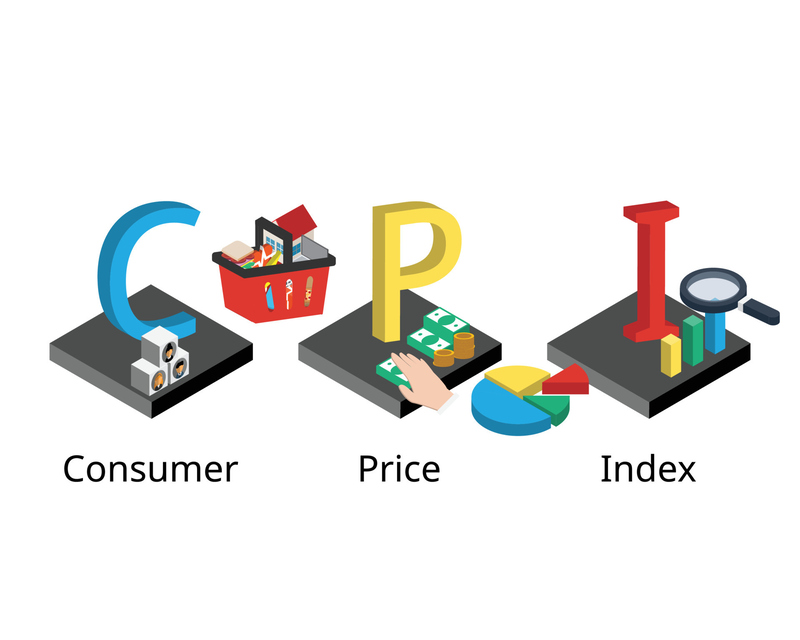Understanding the Consumer Price Index
May 20, 2024 By Susan Kelly
Consumer Price Index (CPI) is a crucial measure for economics, showing how the costs of items and services alter as time passes. It calculates the normal expense paid by city consumers for certain products and services, like foodstuff, transportation methods, or medical assistance among others. CPI offers useful information about inflation direction which guides policymakers, economists, businesses, and buyers to make wise choices. This article elucidates the intricacies of CPI and its multifaceted applications.
Calculating the Consumer Price Index
Computation of CPI includes careful gathering and examination of data. The Bureau of Labor Statistics (BLS) conducts surveys on many households and businesses to make a collection of expenditure data, which is the basis for calculating CPIs. The index gives different spending categories weights according to how much people spend in each area, showing their importance relative to others in the economy. CPI, through following price modifications in these categories over a period, records alterations in total price levels that aid evaluations of inflationary forces.

Furthermore, BLS uses a geometric mean formula to compute the price changes in item categories. This aids in lessening substitution bias where people alter their buying habits towards cheaper options when prices increase. Collectors of data go to retail shops, service places, rental spots, and doctors' offices to get the correct prices on many items. This detailed method guarantees that the CPI mirrors actual consumer actions and spending adaptations.
- Substitution Bias: Adjustments in the CPI calculation account for changes in consumer preferences when prices fluctuate.
- Data Collection: Field agents gather prices from diverse sources, ensuring comprehensive coverage of consumer expenditures.
Interpreting CPI Results
The BLS sends out CPI reports every month, these give important understandings about economic situations. People who study data in detail pay close attention to CPI information to figure out if there's inflation happening and how much power of purchase changes are going on. Higher values shown by the CPI show that inflation rates are rising too, this could mean economic overheating is possible and it might make those who make policies think about doing things to keep prices stable. On the other hand, small CPI values decreasing could be a sign of deflationary forces. In this situation, it may be necessary to take action to encourage economic activity and avoid any possible slowdowns.
The results of CPI also influence discussions about wages and modifying contracts, as unions and managers refer to these numbers for establishing cost-of-living increases. Investors use the data from CPI to understand the conditions of the future economy, making it an important part of financial prediction. Knowing the detailed impacts of CPI changes helps people involved in decisions related to economic stability and its growth make knowledgeable choices.
- Wage Adjustments: Employers and unions use CPI to negotiate salaries, ensuring wages keep pace with inflation.
- Financial Forecasting: Investors rely on CPI data to predict economic trends and adjust investment strategies accordingly.
Uses of the Consumer Price Index
The Consumer Price Index has many uses in different areas. For those who make policies, the CPI data helps decide on monetary policies. This includes adjusting interest rates to handle inflation and keep the economy steady. Also, CPI numbers affect how cost-of-living adjustments (COLAs) are calculated for government programs like Social Security benefits. They should match with increasing living costs over time. Additionally, businesses use CPI understanding to modify pricing plans, predict customer actions, and evaluate market competitiveness.
In the non-governmental field, companies make use of CPI details to establish pricing tactics that keep their products competitive and at the same time increase profit. CPI is also helpful when signing lease contracts because rental prices usually relate to inflation indices for making sure landlords and tenants have fair as well as predictable rental conditions. By reflecting alterations in living expenses, the CPI assists different involved parties in adjusting to economic changes.
- Pricing Strategies: Businesses adjust their pricing based on CPI trends to remain competitive and profitable.
- Lease Agreements: Rent increases are often linked to CPI, providing a benchmark for fair rental practices.
Consumer Price Index in Financial Markets
CPI data has an impact on investor feelings and the values of assets in financial markets. In case there are CPI readings that go higher than what was predicted, it could make people think about stricter money policies which can cause investors to change their portfolios. On the other hand, if the CPI numbers are lower than expected it might increase interest in taking risks and this could boost gains in the equity market as investors anticipate monetary measures being accommodating. CPI reports are frequently known for causing disturbances in currency markets. This is because exchange rates adjust to what's seen as changes in inflation pressures and anticipations of interest rates.
Furthermore, bond markets are especially reactive to CPI data because inflation reduces the actual returns of fixed-income investments. Central banks could modify their inflation anticipations and monetary strategies according to the trend in CPI, which would impact interest rates as well the as overall financial climate. Investors observe these alterations meticulously to manage their asset distribution and safeguard themselves from inflation dangers.
- Bond Market Sensitivity: Inflation data from CPI impacts real returns on bonds, influencing investment decisions.
- Central Bank Policies: CPI trends guide central banks in setting interest rates and managing monetary policy.
Consumer Price Index Limitations and Criticisms

The Consumer Price Index is very useful, but it also has limitations and people make criticisms about it. Some say that CPI might not show the real inflation for all groups of people because how much each group spends can be different. Also, spending habits vary between income levels and regions which may not be reflected accurately in the CPI. Calculation methods could also overlook quality advancements in goods or services over a period, resulting in an overestimation of inflation rates. Also, the basket of goods and services that make up CPI might not completely change the choices of consumers. This can cause differences in reported inflation.
One more critique is not including rural people, which gives an image that may not be wholly about inflation in the country. The CPI has difficulty in quickly introducing new products and technologies, leading to later indications of current market situations. These aspects emphasize the requirement for constant enhancement and adjustment of CPI methods to better depict the changing character of consumer actions and price alterations.
- Rural Exclusion: CPI does not account for rural consumer patterns, potentially skewing national inflation data.
- New Products: Delays in including new products and technologies can result in outdated inflation measurements.
Conclusion
To sum up, the Consumer Price Index is a crucial gauge for evaluating inflation habits and steering economic choices. Its thorough way of calculation and extensive application highlights its importance in watching over price steadiness as well as giving advice on policy reactions. By comprehending the details of CPI and what it signifies, people involved can handle economic difficulties with more understanding and efficiency, guaranteeing lasting development and wealth.

A Comprehensive Overview of MarketBeat vs Seeking Alpha 2024
By Triston Martin / May 20, 2024
MarketBeat and Seeking Alpha offer stock ratings, analysis, and sophisticated screening tools. They modify their offerings to suit investors' needs.

SR-22 Insurance: Definition and Working in Detail
By Triston Martin / May 12, 2024
An SR 22 Insurance Missouri indicates you have the necessary insurance coverage. It helps restore driving privileges or license suspension.

Differences Between General Liability and Workers' Compensation Insurance
By Triston Martin / Feb 01, 2024
This comprehensive guide explores General Liability and Workers' Compensation Insurance, their differences, importance, and why businesses need both for complete protection.

Why knowing your Net Worth is Important?
By Susan Kelly / Nov 01, 2023
You can't improve what you don't measure. Track your net worth and make informed financial decisions.

What Makes a Chartered Insurance Professional? A Deep Dive into CIP
By Triston Martin / May 20, 2024
Explore the benefits of the CIP designation for insurance professionals, covering exams, career advancement, and industry recognition.

Do You Know: How Much You Can Contribute to Your IRA?
By Susan Kelly / Jan 06, 2024
As of 2010, anyone of any age might contribute to an IRA thanks to the Secure Act. You can contribute to your Traditional IRA if you still work for pay. No matter their age, anyone can contribute to a Roth IRA as long as their earned income is within the allowed limits.

How And Where to Invest in the Dow Jones Industrial Average
By Triston Martin / Oct 17, 2023
The DJIA is one of the most widely followed stock market indices and is calculated as the weighted average price of 30 major, well-known companies. The Dow Jones Industrial Average (DJIA) is not a security that can be bought and sold on its own; instead, investors must purchase other investment vehicles that follow the DJIA or its components to have exposure to its performance. Investing in the Dow Jones Industrial Average (DJIA) may be done in several ways, including purchasing shares of the 30 firms that make up the index, purchasing index funds or ETFs that follow the index, or purchasing the "Dogs of the Dow," the Ten highest-yielding equities on the DJIA.

High-Value Home Insurance
By Susan Kelly / Feb 04, 2024
The term "high-value home insurance" refers to a particular kind of homeowner's insurance made accessible for residences with a value of $750,000 or more.

How to Refinance Your Personal Loan: A Comprehensive Guide
By Triston Martin / May 10, 2024
Discover the steps to refinance your personal loan, potentially lowering your interest rates and reducing monthly payments. Understand when refinancing makes sense and what to consider before making a decision

Debt Consolidation and Homebuying Dreams: What You Need to Know
By Triston Martin / Jan 29, 2024
Credit inquiries and new account openings can lower short-term creditworthiness, but debt consolidation may improve credit scores and impact homebuying. Read more.

All About Recoverable Living Trust
By Triston Martin / Jan 24, 2024
Created throughout the Grantor's (the person establishing the trusts) lifetime, a Revocable Living Trust is a legal document that controls the trust assets for as long as the Grantor is alive.

Demystifying the Annual Insurance Review: Your Simple Guide to Ensure Adequate Coverage
By Triston Martin / Nov 25, 2023
Unlock the secrets of an effective annual insurance review with our simplified guide. Learn to navigate your insurance policy, make informed decisions, and ensure your coverage meets your needs.